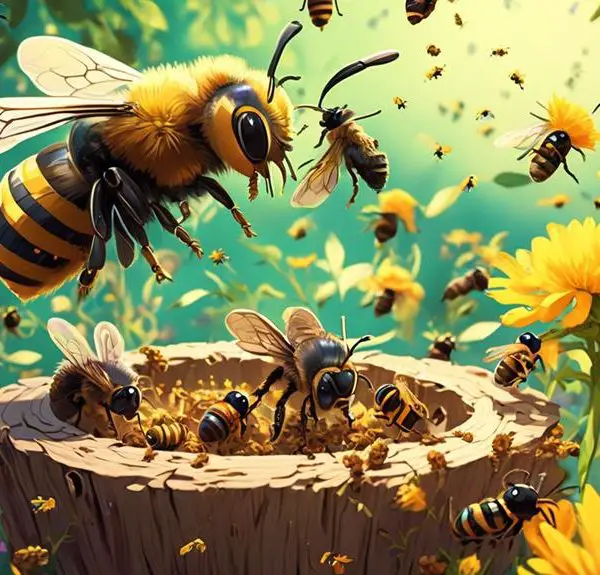Mysteries of mason bees' egg-laying habits unveiled, dive into their fascinating lifecycle and discover how these solitary insects ensure species survival.
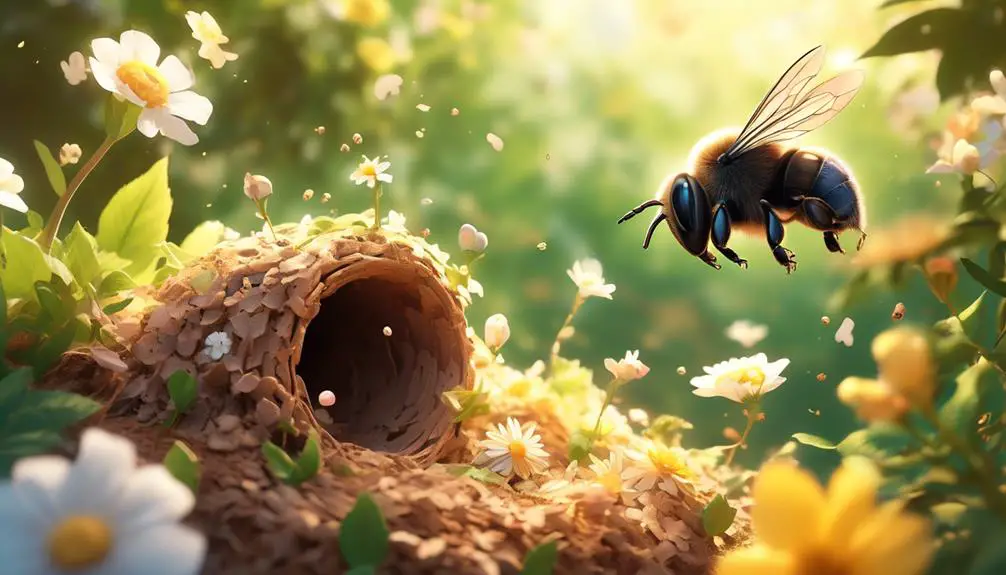
Do Mason Bees Lay Eggs?
Just by chance, have you ever wondered whether mason bees lay eggs? It's a somewhat unusual question, but one that brings you deep into the fascinating world of these industrious insects.
You may know mason bees for their solitary nature and their penchant for nesting in cracks and crevices, however, their reproductive habits might still be a mystery to you.
This is your opportunity to explore the lifecycle of these intriguing creatures and to uncover the surprising ways they ensure the survival of their species.
Are you ready to uncover what lies beneath the surface of the mason bee world?
Key Takeaways
- Mason bees belong to the Osmia family and are solitary creatures.
- They are prolific pollinators, particularly adept at pollinating fruit trees.
- Female mason bees lay their eggs in tubes or hollow reeds, crafting each cell with mud and nectar.
- The reproductive success of mason bees is directly influenced by environmental conditions such as temperature, food availability, nesting sites, and pesticide exposure.
Understanding Mason Bees

To truly understand Mason Bees, you'll need to delve into their unique biology, fascinating behaviors, and integral role in our ecosystem.
Mason Bees belong to the Osmia family and are solitary creatures, distinct from their social honeybee counterparts. They're often metallic blue or green, a characteristic that differentiates them visually from other bee species.
Understanding the fascinating biology of Mason Bees takes you into their reproductive process. Uniquely, they lay their eggs in tubes or hollow reeds, with each egg separated by a wall of mud, hence their name. Unlike honeybees, every female is fertile and makes her own nest, rather than living in a colony with a queen bee. This solitary nature influences their behaviors and interactions within their habitat.
Mason Bees play a critical role in our ecosystems as prolific pollinators. You'll find them most active in the spring, busily pollinating flowers in your garden. They're particularly adept at pollinating fruit trees, making them a favorite among gardeners and farmers.
As you delve deeper into the world of Mason Bees, you'll discover their importance and the need for their conservation.
Mason Bees Reproductive Cycle
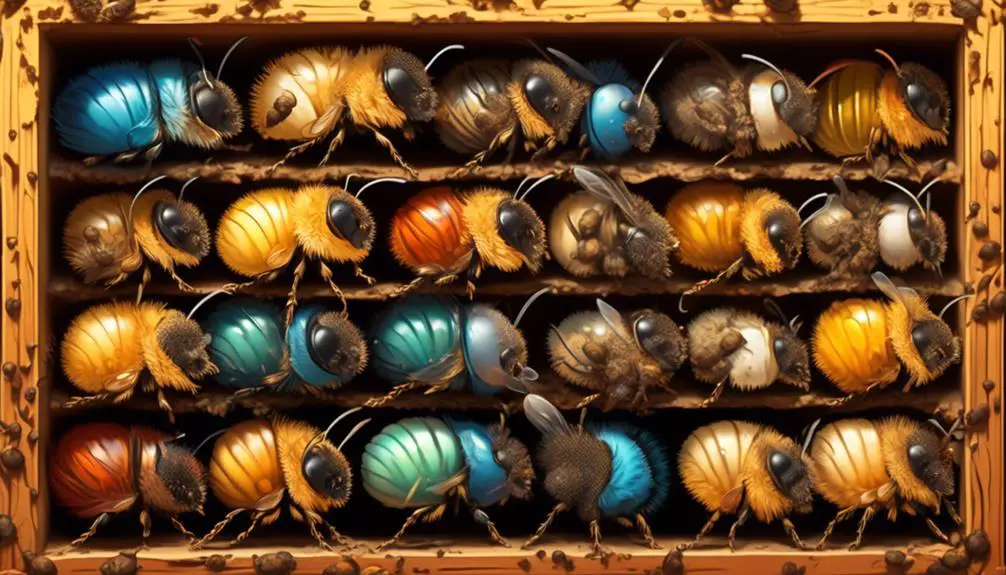
Diving into the reproductive cycle of Mason Bees, you'll discover a fascinating process where each female bee lays her eggs in individual cells within a tube or hollow reed. This species, unique in its solitary nature, doesn't live in hives like honey bees. Instead, they utilize hollow reeds or holes in wood, creating a series of cells.
Each cell is crafted with a mixture of mud and nectar, forming a sturdy, nutrient-rich environment for the developing larvae. The female bee then deposits an egg, along with a supply of pollen and nectar for the future larvae to feed on, and seals the cell with a wall of mud.
The cycle continues, with the bee laying her eggs in a linear fashion, from the back of the tube to the front. Remarkably, she's able to determine the sex of her offspring, laying female eggs in the safer, deeper cells, and male eggs towards the front. This strategic placement ensures that males, which emerge first, can exit without disturbing their sisters, showcasing a fascinating insight into the intricate reproductive cycle of Mason Bees.
How Mason Bees Lay Eggs

When a Mason Bee is ready to lay her eggs, she begins by finding a suitable tube or hollow reed, meticulously lining it with a mix of mud and nectar to create the perfect environment for her offspring. This is a critical step in the Mason Bee's reproductive process, as this environment will serve as the nursery for her progeny.
Once the tube is suitably prepared, she proceeds to deposit her eggs. She'll lay her eggs one at a time, each in its own cell. She starts at the back of the tube, depositing an egg, then backfills with pollen and nectar for the emerging larva to feed on. She then seals off the cell with a thick mud wall to protect the developing bee.
This process is repeated until the tube is full. It's crucial to note that she lays female eggs first, and the males towards the entrance. This is a protective strategy, as male bees emerge first and are more expendable to predators.
Understanding the meticulous and fascinating process of how Mason Bees lay eggs provides insight into their unique reproductive strategies and underscores their important role in our ecosystems.
The Role of Male Mason Bees
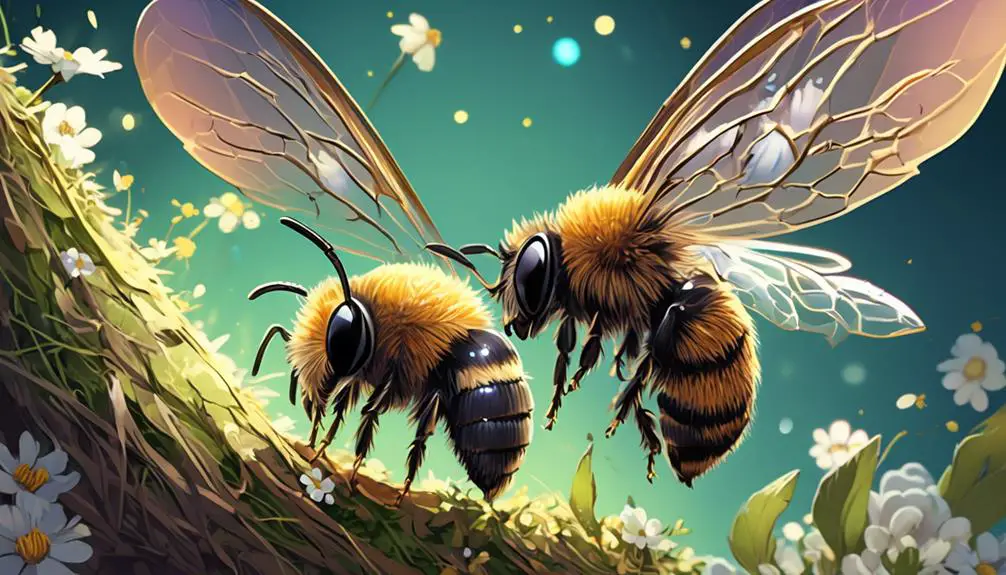
In the bustling world of Mason Bees, male bees play an intriguing and vital role, often misunderstood and overlooked. Their primary purpose is to mate with the female mason bees. Unlike their honeybee counterparts, male mason bees don't have a stinger, making them harmless to humans.
After winter hibernation, male mason bees are the first to emerge. They'll linger around the nests, waiting for the females. Once a female appears, the males compete for her attention. It's a fierce competition, as the strongest and quickest male usually wins the opportunity to mate.
After mating, the male's role is essentially fulfilled. They don't participate in nest building or provision of food, as this falls to the females. It's important to note that male mason bees have a shorter lifespan, typically dying soon after mating.
You'll often find male mason bees sunbathing or enjoying nectar in your garden. They're not just idle — they're essential for the survival of the species. So next time you spot a male mason bee, remember the crucial role it has in maintaining the delicate balance of our ecosystem.
Impact of Environment on Egg-Laying
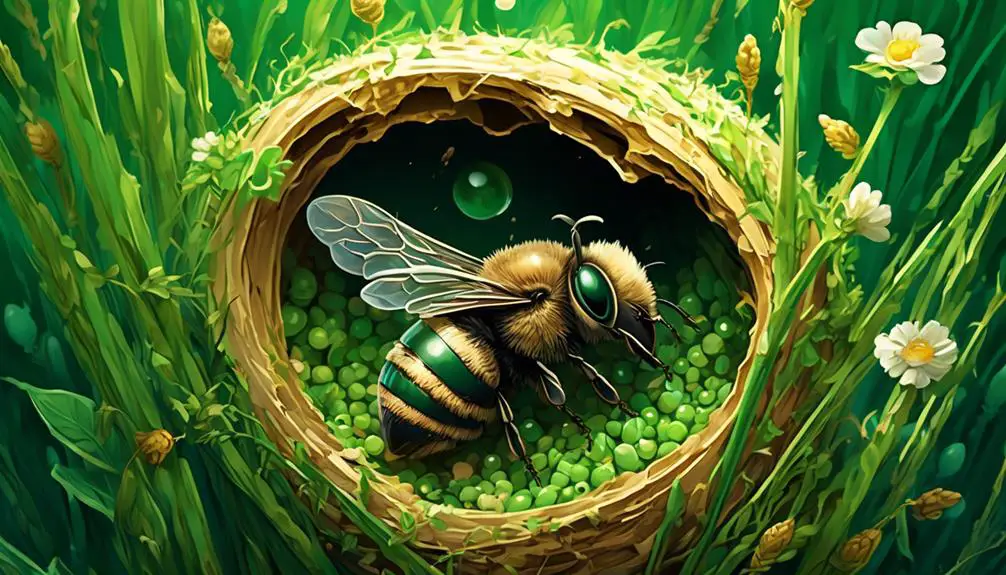
Understanding the impact of the environment on egg-laying in mason bees is crucial, as the conditions of their habitat directly influence their reproductive success. You see, mason bees are particularly sensitive to their surroundings. When environmental conditions are favorable, they'll lay more eggs. However, if the environment is harsh, egg production can reduce significantly.
For instance, mason bees need a certain amount of warmth and sunlight for their bodies to function optimally, which in turn affects their ability to lay eggs. They also require a suitable source of pollen and nectar as this is their primary source of sustenance. Without enough food, they can't produce eggs.
Moreover, mason bees lay their eggs in holes or tubes, typically in wood. Therefore, if there aren't enough suitable nesting sites in their environment, it can severely limit their reproductive capacity. Pesticide exposure can also harm their reproductive system, leading to fewer eggs being laid.
In essence, every aspect of a mason bee's environment can impact its egg-laying. Alterations in temperature, food availability, nesting sites, and exposure to chemicals are all key factors that can affect their reproductive success.
Thus, it's integral to maintain suitable habitats for these beneficial insects.
Conclusion
Yes, Mason bees do lay eggs. They have a unique reproductive cycle, laying a single egg in each cell they construct, often in tubes or pre-drilled holes.
Male Mason bees don't assist in egg-laying, their role is mainly to fertilize the female.
The environment significantly impacts egg-laying, with factors like temperature and availability of food sources playing key roles.
Understanding these bees' egg-laying process is crucial in aiding their conservation efforts.

